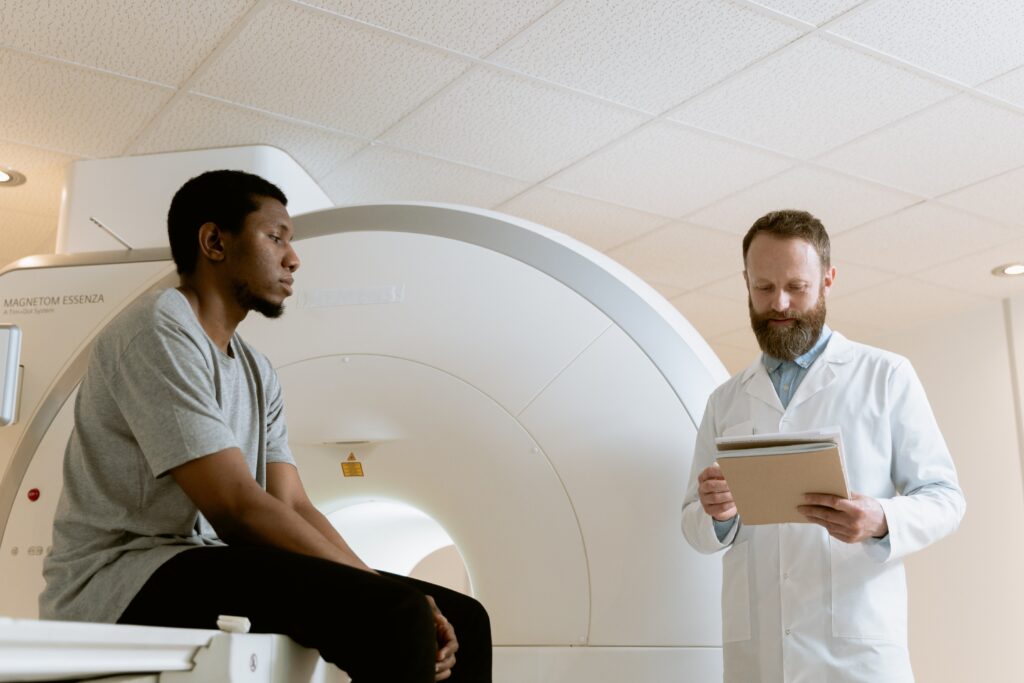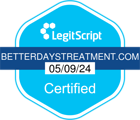For anyone who has ever struggled with an opioid dependence, my story will sound and feel familiar.
Before seeking treatment, my relationship with opioids was a harrowing and tumultuous journey.
I remember vividly the grip that opioids had on my life, slowly but surely tightening its hold with each passing day.
At first, my opioid use felt like a temporary solution to escape the pain and struggles I had been facing for most of my life.
The euphoria and temporary relief that opioids offered me were a great respite from my troubles, allowing me to numb the emotional and physical pain I was experiencing.
However, as time went on, my relationship with opioids (and eventually my alcohol use disorder) became increasingly destructive.
What once provided a brief escape soon turned into a relentless cycle of dependence and craving.
The drugs and alcohol took control of my life, dictating my every thought and action.
I found myself chasing the high, constantly seeking the next fix to ward off the overwhelming withdrawal symptoms that would inevitably arise.
As my dependence on opioids and alcohol grew, so did the consequences. Relationships with my loved ones became strained and broken, as trust and reliability became distant memories.
My professional life suffered greatly as well, with missed opportunities and a lack of focus and productivity.
The once vibrant and optimistic person I had once been soon became a mere shell of my former self, consumed by the relentless cravings and the relentless pursuit of the next high.
The impact of alcohol and opioids extended beyond my personal life and seeped into my physical and mental well-being. I soon began to experience a range of health issues, both physical and psychological. The toll on my body was undeniable, with deteriorating health, a compromised immune system, and increased vulnerability to infections.
The mental anguish was equally debilitating, as I battled depression, anxiety, and an overwhelming sense of shame and guilt.
My relationship with opioids was a downward spiral, a dark abyss that seemed impossible to escape.
But it was during my darkest moments that I realized I needed help and found the program that would give me what I needed to be able to win my battle with substance abuse and finally treat alcohol and opioids the way I hadn’t been able to on my own.
How My Relief Came Through Discovering Opioid Treatment Programs
Opioid treatment programs (OTPs) are specialized healthcare facilities designed to provide comprehensive treatment and support to individuals struggling with opioid use disorders.
These programs aim to address the physical challenges, the psychological cravings, and the social aspects of addiction by offering a range of evidence-based treatments and therapies tailored to each individual’s needs.
One of the key components of opioid treatment programs is medication-assisted treatment (also known as a MAT program for short).
A MAT program combines the use of FDA-approved medications with counseling and behavioral therapies allowing participants in the program to employ a whole host of tools into their resource support kit to best help them with the chemical imbalances that have been created and help them to sustain recovery for the long run.
These types of medications relieve cravings, help to manage withdrawal symptoms, and block the effects of opioids.
Today, it is widely believed that the use of medications in conjunction with therapy can ultimately allow individuals to regain control over their lives and work towards long-term recovery from opioid use disorders.
Opioid treatment programs that are part of a regionally accredited institution also prioritize ongoing monitoring and support.
Regular assessments and check-ins with healthcare professionals are conducted to ensure that treatment plans are effective and adjusted as needed. This kind of intensive outpatient care program may also incorporate drug testing to monitor progress and adherence to treatment protocols.
What are the Key Components of a MAT Program?
Not all substance use disorders are the same and not all programs can treat all of them.
If you are looking for a way to treat an opioid use disorder once and for all, here are some of the main components as to why a MAT program may be the best answer for you:
- Medication-Assisted Treatment (MAT): MAT involves the use of FDA-approved medications, such as methadone, buprenorphine, or naltrexone, to help individuals manage their opioid addiction. These medications work by reducing cravings, minimizing withdrawal symptoms, and blocking the effects of opioids. MAT is often provided in an IOP program (Intensive Outpatient) setting, which allows individuals to receive the support they need while continuing to live their lives outside of treatment.
- Comprehensive Assessment: MAT programs start with a thorough evaluation of the individual’s physical and mental health, substance use history, and treatment needs. This assessment helps healthcare providers tailor a personalized treatment plan.
- Medication Management: The administration and monitoring of medications are critical aspects of MAT programs. Healthcare professionals carefully prescribe and adjust medications to ensure their effectiveness and safety.
- Counseling and Therapy: MAT programs incorporate counseling and therapy as essential components. Individual counseling sessions provide a supportive and confidential environment for individuals to address underlying issues, develop coping skills, and set goals for recovery. Group therapy sessions may also be offered to foster peer support and provide opportunities for sharing experiences and insights.
- Behavioral Interventions: MAT programs often include behavioral interventions, such as cognitive-behavioral therapy (CBT) or motivational interviewing (MI). These approaches help individuals identify and change negative thought patterns and behaviors associated with substance use.
- Medical Monitoring: Regular medical check-ups and monitoring are crucial in MAT programs to ensure the safety and effectiveness of medications. Healthcare professionals closely monitor individuals for any potential side effects or complications and adjust the treatment plan accordingly.
- Relapse Prevention Strategies: MAT programs equip individuals with relapse prevention techniques and strategies to manage triggers and cravings. These may include developing healthy coping mechanisms, stress management techniques, and creating a supportive social network.
- Coordinated Care: MAT programs emphasize coordinated care by collaborating with other healthcare providers, such as primary care physicians, mental health professionals, and social services. This integration ensures a comprehensive and holistic approach to treatment.
- Supportive Services: MAT programs often offer additional supportive services, such as vocational assistance, housing support, and access to community resources. These services address various practical needs that can impact an individual’s recovery journey.
- Ongoing Monitoring and Support: MAT programs provide ongoing support and monitoring to assess progress, adjust treatment plans, and address any emerging challenges. Regular check-ins, drug testing, and follow-up appointments help individuals stay on track and maintain their recovery.
It’s important to remember that the specific components of MAT programs may vary depending on the individual’s needs and the treatment center’s approach. A comprehensive and personalized MAT program combines these key components to provide the whole patient with the necessary tools and support for their recovery journey.
How Can I Find the Best MAT Program for Me?
When I decided to tackle my relationship with opioid use disorder, Better Days stood out as the best MAT program for me for several reasons.
From the moment I walked through their doors, I felt seen and heard.
The healthcare professionals took the time to understand my unique needs, circumstances, and treatment goals. They developed a comprehensive treatment plan tailored specifically to me, ensuring that my recovery journey was built on a foundation of individualized care.
Additionally, Better Days offers additional resources that result in a multidisciplinary approach that goes beyond medication alone.
They understand that true healing involves addressing the underlying factors that were contributing to my substance use disorders and that I would need to delve into the root causes of my substance use, gain insight into my triggers and patterns, and develop healthy coping strategies for long-term sobriety.
The combination of medication and therapy allowed me to not only manage cravings and withdrawal symptoms but to also address the emotional and psychological aspects that my substance use disorders had eventually had on me.
Another aspect that sets Better Days apart from other substance use disorders treatment programs was the supportive and compassionate environment they strive to create at their treatment facility.
The medical and support staff genuinely care about each individual’s well-being and fosters a sense of community and connection. Through group therapy sessions and peer support, I found the strength and encouragement from others who have walked a similar path. I felt like I was no longer alone, and that I was not – somehow – broken.
Substance use disorders can steal everything from a person. Better Days gave me back some of who I used to be. Someone I almost didn’t recognize anymore.
Reach Out to Start Your Better Days Today
If you are ready to embark on your own journey to a life without drugs and/or alcohol, reach out to Better Days for help.
Better Days’ facility is located in the heart of sunny Southern California in a city that’s known for its beautiful weather and upbeat atmosphere.
This makes it the ideal location to begin your healing process.
Whatever your struggle has been up until now, Better Days can give you the hope you’ve been waiting for.
Better Days is ready to show you the path to the other side of recovery.




